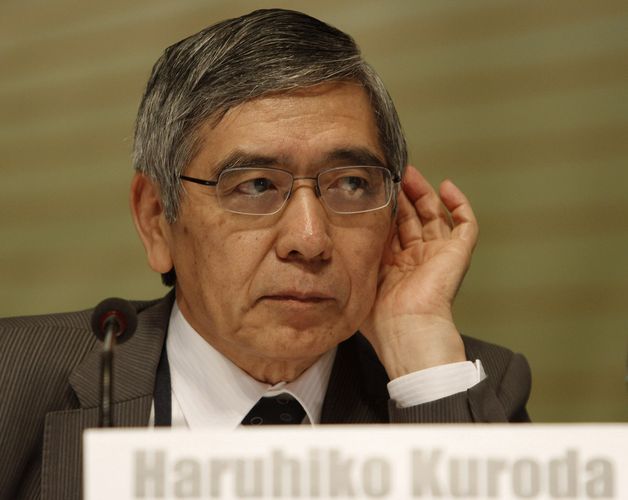The Asian Development Bank has pre-funded most of its needs for the year without ever losing its implied funding costs from sight.
To view the digital version of this report, please click here.
Amid such an uncertain market and given the strong demand for all kinds of bonds in the first quarter, any issuer that considers itself savvy would have met most of its funding needs in the beginning of the year, when investors were still upbeat. So it is no surprise that the ADB has already raised two-thirds of what it will require this year from the dollar market. Add in some timely pre-funding done last year and the ADB has pocketed some US$10bn of the US$14bn goal it has set for itself.
Despite having front-ended its funding, the supranational does not seem to be suffering from lack of demand for its dollar paper. On the contrary, as the eurozone uncertainty continues to take its toll, investors are flocking to the Asian multilateral’s bonds. In the past few years, the ADB has seen its range of investors in the dollar market widen and its traditional investor base requesting ever larger amounts of bonds.
It is only reasonable that this would happen. With investors looking for safe-havens to park their money and the US Treasury lot overcrowded, almost any supranational that sells dollar debt is received by a cheering crowd. Within the multilateral team, the ADB is a favourite given that it is backed by countries that comprise the region which now drives global GDP growth.
Matching liabilities
The problem for the ADB now may be less about demand than for its own debt requirements. The conservative lender tries to match its liabilities to its assets as much as possible. Given that its loans often have shorter tenors and that it lends on a spread over six-month Libor basis, the issuer often seeks shorter tenors that can be economically swapped into floating rate.
“ADB considers long-dated opportunities as part of its diversification strategy but takes into account the steepness of the curve given that ADB is essentially a cost pass-through institution,” said Maria A Lomotan, head of major currency funding at the ADB. She says ADB has issued a seven-year in the US dollar market in the past three years, as levels for a 10-year US dollar bond issue have been relatively expensive
This year the ADB has already tapped dollars for US$5.25bn on the three-year, five-year and seven-year points of its curve. So revisiting the dollar market would make more sense on a longer tenor, as a 10-year, unless it wants to cram too much of its maturities in a single year and increase its refinancing risk.
Besides, the bank also tries to diversify its funding base. In 2011, roughly half of its funding came from the major currencies markets with the other half coming from a range of other currencies.
That limitation is almost frustrating for bankers and investors, which would love to see the ADB printing even more in dollars. From the perspective of nominal yields the bank could achieve very tight levels. Its bonds currently trade at a spread close to 10bp over US Treasuries, emphasising how strong demand for ADB paper has been. This means a new 10-year bond could arguably be sold with a 1.5% coupon, a dream situation for most banks.
“ADB considers long-dated opportunities as part of its diversification strategy but takes into account the steepness of the curve given that it is essentially a cost pass-through institution”
The ADB continues to undertake issuances in other currencies to deepen and broaden its investor base. It has been very active in Australia, for instance, and in the past two years, the Australian dollar market has provided the second largest volume to ADB’s borrowing program in terms of public issuances after the US dollar. Lomotan said that Australia’s importance in the funding base of the bank has been in terms of both investor depth and cost-efficient longer-dated opportunities.
“While the basis is a key factor, ADB’s current curve in Australia does show that there has been strategic commitment to respond to genuine investor demand,” she said.
Arbitrage, however, rules the decision-making when it comes to non-core currencies. The institution continues to be active in the Uridashi market in Japan and has recently issued in Australian dollar, Turkish lira and Brazilian Real and South African rand. Lomotan said that the choice of currency in these cases was investor-driven.
“Private placements in Japan remain a key component of the ADB’s funding program and provide both investor diversification and competitive funding levels,” Lomotan said.
Off the beaten track
In fact, any issuer seeking a roadmap to access off-the-beaten path markets needs only to follow in ADB’s tracks. The issuer often taps the Thai baht and the Philippine peso when these markets offer favourable price conditions. While they do not offer large sizes, they serve the purpose of diversifying the bank’s investor base while it also saves money.
The ADB still has room to tap the sterling market too. Lately it has started to look at the euro market more closely, where it is yet to print a transaction. The bank is rumoured to have seen a lot of interest from European accounts seeking to diversify into high-quality paper away from the US. However, with basis swaps deeply negative, the economics of a trade are still not favourable enough.
But the ADB is in no hurry, not with the euro market or any other. It has already pre-funded most of its needs, and pretty much met its target of major currency issuance. With only US$4bn left to do in the next six months – an amount it could raise in a day in the dollar market if need be – the issuer can take its sweet time.

